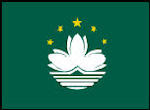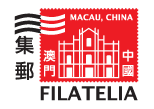Telefones Antigos de Macau
Em 1831, Michael Faraday demonstrou que as vibrações de metal podiam ser convertidas em impulsos eléctricos. Em 1861, Johann Philip Reis, construiu urn aparelho que convertia o som em electricidade e electricidade em som! Muitas experiências de sucesso seguiram-se a estas e o telégrafo foi inventado. Fol então que no dia 10 de Março de 1876, três dias após a sua patente ter sido publicada. algo de extraordinário aconteceu no Laboratório de Bell. quando Alexander Grahani Bell, numa sala de experiências. charnou o seu assistente Thomas Watson que se encontrava numa outra sala. “Sr. Watson, venha cá, quero falar-Ihe!”
Estas históricas palavras, as primeiras a serem transmitidas através de um fio de telefone. foram articuladas por Alexander Graham Bell quando este verificou que a sua roupa estava salpicada de ácido sulfúrico que fazia parte do sistema de transmissão. 0 Sr. Watson ouviu a chamada através do receptor que estava !igado ao transmissor que Bell havia construido e o que se seguiu é história que culmina corn a fundação da Companhia telefónica “Bell Telephone Company” conhecida como AT&T, que cresceu ate se transformar na maior companhia telefónica do Mundo.
A história actual da invenção do telefone é objecto de várias e complexas disputas. É normalmente atribuida a vários inventores, entre os quais destacam-se Antonio Meucci, Philip Reis, Elisha Gray e Alexander Graham Bell. A Resolução H.RES.269 do Congresso do Estados Unidos do dia 11 de Junho de 2002, reconheceu o trabaiho de Antonio Meucci na invenção de telefone.
IM AB165 de Parede — É um modelo de parede do período entre 1905 e 1920. É um design típico de vários modelos usados no Reino Unido e noutros países nos finais do século XIX. O magneto, a campainha e a bateria local são colocados numa caixa de madeira corn urn Gerador RH4500 que funcionava com uma resistência de 25.000 Ohm e um 300 Ohm 4-bar magneto de campainha.
LM AC400 Pilhar — Este telefone de mesa magneto com um botão de premir “cut-out”, é do período entre 1908 e 1920, o modelo que veio substituir o anterior LM AC300. No inicio do século XX, dada a influência da moda, o estilo que expunha o “esqueleto” foi substituido por um mais fechado e decorativo como por exemplo o modelo da Ericsson AC300, que na altura era muito popular no Reino Unido: Era identificado pelos correios da altura como “Tele No 88” com revestimento de madeira no painel de metal e a Companhia Nacional de Telefones identificava-o como NT 13. Mas o nome genérico deste tipo, conhecido como “Corporation Set” deriva do facto de as instituições e corporações municipais que entraram no mercado no inicio do ano 1900 usarem este tipo de telefone quase que de forma exclusiva.
Telefone manual N3191T da Siemens. é urn modelo de manivela fabricado com resina de tipo Bakelite entre 1920 e 1940. A manivela é utilizada para marcar.
Ericofon (da Ericsson - o Ericofon (Rotary Dial Phone) é um aparelho telefónico criado pela companhia sueca Ericsson. Fol concebido nos finais dos anos 40 por uma equipa de designers que incluiu Gösta Thames, Ralph Lysdil e Hugo Blomberg. Uma das características fundamentais e inovadoras deste tipo de telefone é a combinação nurn único aparelho das componentes de auscultador e de marcação. Esta concepção de design antecipou em várias décadas a evolucão para os telefones sem fios e telefones móveis.
Telefone Público da Siemens, 1930 — É um tipo de telefone Mealheiro de Cabina dos anos 30, com instruções de operação em Português.
Telefone Público da Siemens PAT1789-1HAS4 — Este modelo foi concebido para funcionar apenas com moedas de 10 avos. No entanto, nos anos 30 o modelo AB de Múltiplas Moedas foi introduzido e apresentava várias funções de grande utilidade prática. Foi construido com componentcs mais robustos e chegou a ser o telefone de parede padrão para garantir o baixo custo de manutenção. Era necessário utilizar várias moedas para acompanhar o aumento dos custos das chamadas telefónicas.
Modelo GPO 332 — Telefone de fabrico Japonês com painel de marcação em caracteres Chineses. Concebido pela Ericsson, chegou a ser o telefone padrão, popular e mais produzido entre 1940 e 1950 e mesmo após meio século continuou a ser muito popular.
Museu das Comunicacôes - Correios de Macau
Mais Informação aqui.
Antique Telephones in Macao
Michael Faraday, on I 831, proved that vibrations of metal could be converted to electrical impulses. Johann Philip Reis. on 1861, built an apparatus that changed sound to electricity and back again to sound! Many experiments that followed took place with success and the telegraph was invented. Then, on March 10, 1876, three days after his patent was issued, something happened in Bell Labs, when, Alexander Graham Bell. in one room, called to his assistant, Thomas Watson, in another room! “Mr. Watson, come here; I want you!”
These historic words, the first articulate complete sentence ever spoken over an electric telephone, were uttered by Alexander Graham Bell when he spilled some sulphuric acid on his clothes which was part of the transmission apparatus. Watson heard the request through a receiver connected to the transmitter that Bell had designed, and what followed after that is a history of the founding of the Bell Telephone Company (later AT&T), which grew to be the largest telephone company in the world.
The actual history of the telephone is a subject of complex dispute. Some of the inventors credited with inventing the telephone include Antonio Meucci, Philip Reis, Elisha Gray and Alexander Graham Bell The Resolution H.RES.269 of the US Congress, dated June 11, 2002, recognized Antonio Meucci’s work in the invention of the telephone.
LM ABI6S Wall Model — This is a magneto wall model, from 1905 to 1920 period. This design is typical of many in use in the late 19th century, both in the UK and elsewhere. A magneto, bell and local battery were held in the wooden box. And a Generator RH4500 ring through line resistance of 25.000 Ohm and the Ringer Resistance is 300 Ohm 4-bar magneto.
LNI AC400 de Pillar — This magneto desk telephone w/push button cut-out, from 1908 to 1920, is a replacement for previous LM AC300. By the early years of the 20” century, the fashion changed and the exposed construction of the Skeleton gave way to the enclosed style of phone, such as the Ericsson AC300, which was widely used in UK: Post Office used it as Tele No 88, with the metal side panels painted in wood grain finish: National Telephone Company used it as their NT 13. But the generic name for this type of’ phone, the “Corporation Set” arises from the fact that the municipal corporations that entered the market in the early 1900s used this type of phone almost exclusively.
Siemens N3191T Manual Telephone — This is an old black heavy cranks handle telephone. Manual telephones produced from 1920s to early 1940s made from black Bakelite. The crank must be turned to dial.
Ericsson Ericofon Rotary Dial Phone — The Ericofon is a Swedish telephone handset created by Ericsson. It was designed in the late l940s by a design team including Gösta Thames, Ralph Lysell and Hugo Blomberg. A specific feature of the telephone is that the two major components-the handset and the dial-are combined in a single unit. This one-piece design anticipated the evolution of the typical cordless phone and cell phone by several decades.
Siemens 1930s Public Telephone — This Moneybox Wall Telephone is the public phone from Siemens 1930s. It has Portuguese instructions on how to use this automatic coin phone.
Siemens PAT 1789-IHAS4 Public Telephone — The slot of this automatic coin phone was designed to accept only 10 cents coins. In 1930s the AB Multicoin public telephone was introduced. Still a British model from Hall Telephone Accessories Lid, it had a number of useful features. It was much more strongly built, the telephone was a standard wall phone to keep maintenance costs down, and it could take a range of coins to allow for the cost of calls increasing.
GPO 332 Model — Japanese made Bakelite phone with Chinese Dial Number. First designed by Ericsson, this became the GPO (UK General Post Office) standard (332) phone largely produced in the 1940’s and 1950’s. Now half a century old, still a very popular working nostalgic phone.
Communications Museum — Macao Post
More information here.
Dados Técnicos/Technical Data
Valor dos Selos/Stamps Value: 4 stamps of 1.50, 2.50, 3.50 and 4.00 Patacas
Folhas Miniatura com duas séries/Minisheets with four sets
Valor do Bloco/Souvenir Sheet Value: 10.00 Patacas
Desenho/Design: Ao Kuan Kin
Data emissão/Issue date: 09.10.2010
Impressor/Printer: Österreichische Staatsdruckerei, Austria
Impressão/Print: Offset Lithography
Papel/Paper: Paper with Security Fibers



























